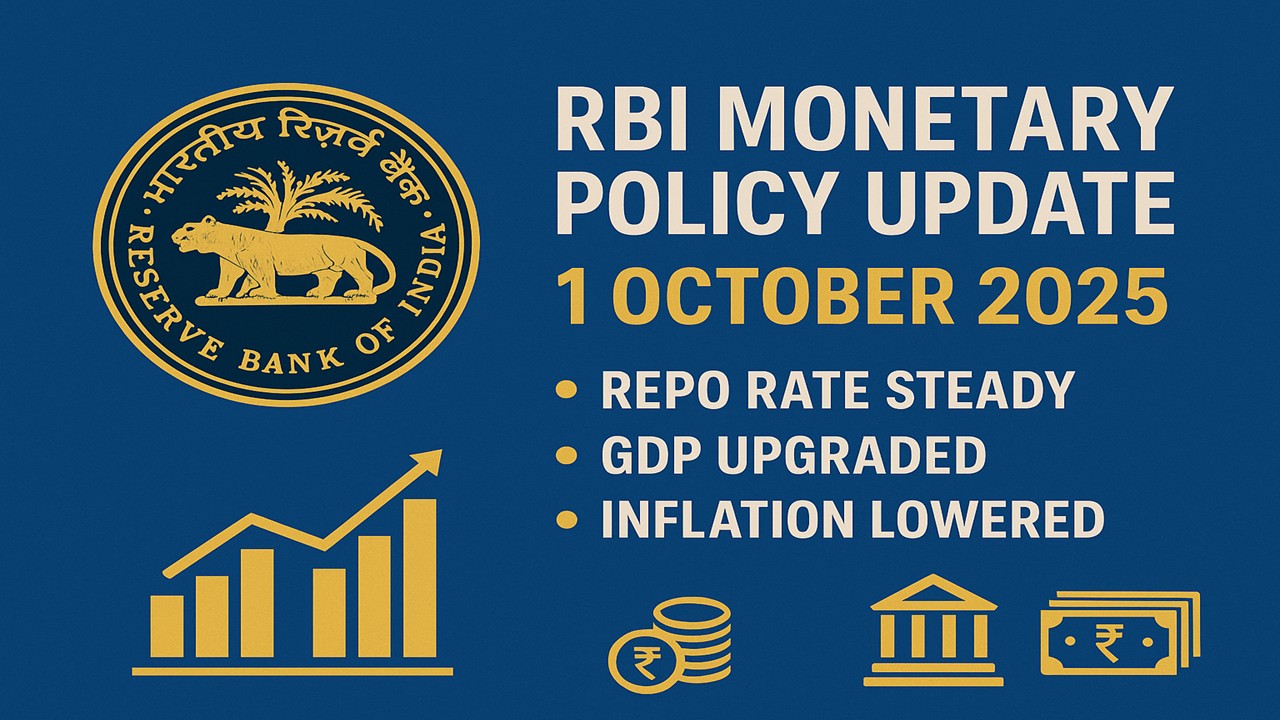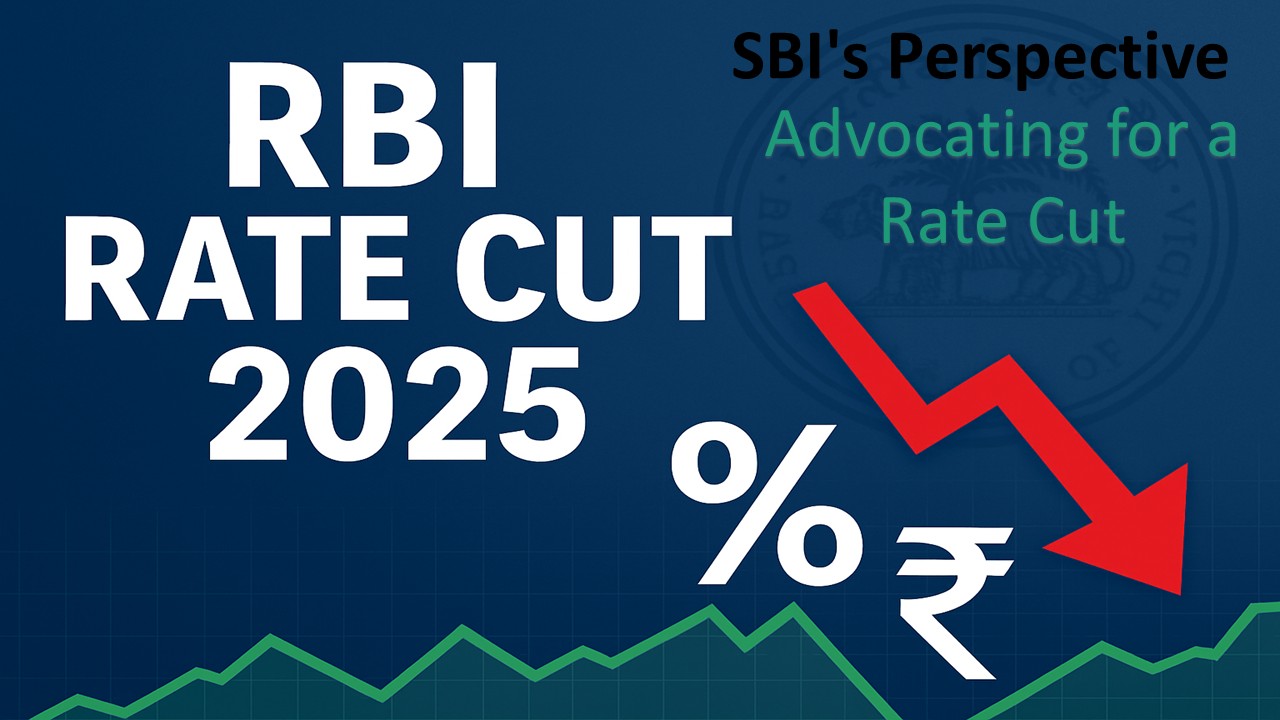
हिंदी में पढ़ने के लिए मेनू बार से हिंदी भाषा चयन करें।
Reserve Bank of India (RBI) Governor Sanjay Malhotra addressed the media today following the Monetary Policy Committee (MPC) meeting, announcing key decisions that impact interest rates, economic growth, inflation, and banking measures. The three-day meeting focused on balancing growth with price stability and strengthening the banking system.
Repo Rate Remains Unchanged at 5.5%
Governor Malhotra confirmed that the MPC unanimously decided to keep the repo rate at 5.5%. He described the approach as “wait-and-watch,” aiming to evaluate the impact of previously implemented policy measures.
Analysis: The stable interest rate signals continuity in monetary policy, allowing businesses and consumers to plan their finances without sudden changes in borrowing costs.
GDP Growth Forecast Revised Upward to 7.2%
The RBI revised its GDP growth forecast for FY26 from 6.8% to 7.2%, reflecting stronger-than-expected performance in the first quarter, which recorded 7.8% growth.
Analysis: The upward revision indicates a robust domestic economy, encouraging investor confidence and boosting corporate investments. Higher growth is also expected to generate employment opportunities.
Inflation Outlook Lowered to 2.6%
The RBI lowered its FY26 inflation projection to 2.6%, citing improvements in GST implementation and a decline in food prices.
Analysis: Lower inflation is beneficial for consumers as it reduces the cost of living and supports stable household expenditure. It also provides flexibility to RBI in monetary policy decisions.
Measures to Boost Bank Lending
The Governor announced several measures aimed at improving credit flow from banks:
- Corporate and infrastructure loans will become more accessible.
- Banks will have greater flexibility in lending to companies.
- Public Sector Banks (PSBs) are advised to maintain capital buffers to mitigate future financial shocks.
Analysis: These measures will enhance credit availability for businesses, especially small and medium enterprises, while ensuring the financial stability of banks.
Forex Reserves Remain Strong at $700.2 Billion
As of September 26, 2025, India’s foreign exchange reserves stood at $700.2 billion, sufficient to cover approximately 11 months of imports.
Analysis: A strong forex reserve position strengthens confidence in India’s ability to handle international economic pressures and currency volatility.
RBI Maintains Neutral Policy Stance
Governor Malhotra stated that the RBI will maintain a neutral monetary policy and adopt data-driven decisions for future rate adjustments.
Analysis: A neutral stance provides flexibility and reduces the risk of abrupt shocks to the financial markets, ensuring stability while responding to economic developments.
Global Trade and Inflation Concerns
Governor Malhotra highlighted global trade uncertainties, including export tariffs and geopolitical risks. However, he emphasized that domestic reforms, particularly in GST, will help control inflationary pressures.
Analysis: While global economic conditions pose challenges, domestic policy measures are expected to maintain price stability.
Market Reactions
Following the RBI announcement, the Indian equity markets reacted positively. The Nifty 50 and Sensex indices showed moderate gains, while bond yields slightly increased. The Indian rupee strengthened against the US dollar.
Analysis: Market response reflects investor confidence in RBI’s balanced approach and forward-looking policies.
Impact on Consumers and Housing Loans
Stable repo rates benefit consumers, particularly those taking housing or personal loans, as borrowing costs remain predictable.
Analysis: Stability in interest rates supports financial planning for households and encourages spending and investment.
Policy Direction Moving Forward
Governor Malhotra emphasized that the RBI will continue to base future decisions on economic data and maintain a balanced approach considering both domestic and international factors.
Analysis: A data-driven, neutral policy ensures flexibility, allowing RBI to respond effectively to changing economic conditions without destabilizing markets.
Overall Impact and Conclusion
The RBI’s latest policy decisions clearly indicate a focus on fostering economic growth, controlling inflation, and maintaining financial stability. The key highlights include:
- Stable interest rates supporting borrowers and investment planning.
- Revised GDP growth reflecting a strong and resilient economy.
- Lower inflation providing relief to consumers.
- Banking measures improving credit flow while enhancing financial security.
- Strong forex reserves ensuring macroeconomic stability.
- Neutral monetary policy offering flexibility for future decisions.
These measures collectively signal a balanced and forward-looking approach by the RBI, promoting sustainable growth while safeguarding the financial system. Businesses, investors, and consumers can all benefit from these policy directions in the upcoming fiscal year.
Source: RBI Governor’s Statement




































































